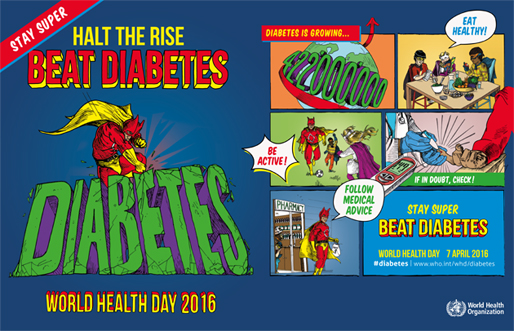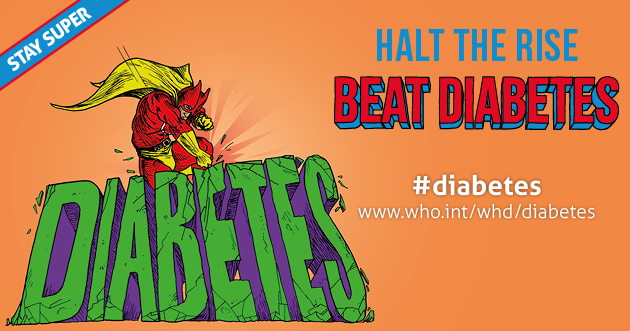And what we perceive as healthy is that which is conducive to health, to the promotion of health, the general condition of the body and mind with reference to soundness and vigor.
Population Health: WHO’s Message
On the foundation of these definitions of health, the World Health Organization (WHO) celebrates World Health Day, a global health awareness day celebrated every year on 7 April. In 1948, the WHO held the First World Health Assembly. The Assembly decided to celebrate 7 April of each year, with effect from 1950, as the World Health Day. The WHO is the leading global health authority within the United Nations System. The work of WHO is varied and can be summarized through their 6-point agenda.
The WHO uses the April anniversary of their founding day not only as an opportunity to celebrate the organization and its work but also as an opportunity to highlight a current global health priority. Each year, the WHO chooses a health condition to highlight during its World Health Day. Themes in the past have included: ageing and health, urbanization and health, food safety, and traffic safety.
For 2016, the focus is on diabetes. The main goals of the World Health Day 2016 campaign will be to:
- Increase awareness about the rise in diabetes, and its staggering burden and consequences, in particular in low-and middle-income countries;
- Trigger a set of specific, effective, and affordable actions to tackle diabetes. These will include steps to prevent diabetes and diagnose, treat and care for people with diabetes;
- Launch the first Global report on diabetes, which will describe the burden and consequences of diabetes and advocate for stronger health systems to ensure improved surveillance, enhanced prevention, and more effective management of diabetes.
World Health Day 2016 will focus on ways to halt the rise of diabetes worldwide. WHO designed posters on diabetes for use around the world during this year’s campaign. The poster visuals promote ways to “stay super” and “beat diabetes”.

Poster Credit: World Health Organisation
Individual Health
While the WHO focuses on macro health issues, behaviors that will secure or enhance the health of populations, I want to bring the lens down to the micro level: the functioning of the systems within our bodies that lead to individual health and wellness, and what we can do at that cellular-system level to improve, enhance, and maintain a healthy mind in a healthy body.
When I was in practice at the student health center of a large university, the patients we were seeing were generally young and healthy, although often prone to risk-taking behavior (the topic for other blogs in the near future). One of the lessons I tried to instill in these young people was that of personal responsibility for their future health; that their bodies were made of remarkable interactive systems that worked to maintain homeostasis; and that they were responsible to keep each system at its best functioning level.
Health messages included starting and maintaining an exercise program, maintaining a normal weight through proper nutrition, and stopping (or never starting) the use of tobacco products, among others.
Research and much personal commentary show that young people will exercise while in college, but once in the workplace, those behaviors quickly stop. In addition, many are making the transition from an active life to one spent in a chair behind a computer. The main message: Find an activity you like and maintain it throughout life; stay active and don’t let sedentary behavior become your normal. Regular activity gives you a strong and fit physical structure within which all other systems can function.
A strong and fit body requires fuel to feed its cells, whether they’re muscle, skin, bone, heart, organ, or nerve. Good nutrition is the key to optimizing the functioning of every part of the human body.
Two recent studies — one in the U.S. and one in Norway — show that those living in developed (and some would say “over” developed) countries are now eating more processed food than “whole” food on a daily basis, and that these behaviors may lead to increased levels of obesity, diabetes, and heart disease.
The main message here is: Eat a wide variety of whole (and wholesome) foods every day. I leave you with a quote from 1839:
It is wrong to say that certain articles of food are healthy or unhealthy. Wholesome and unwholesome are the right words. A pig may be healthy or unhealthy while alive; but after he is killed and becomes pork, he can enjoy no health, and suffer no sickness.
~ Eliza Leslie, “Miss Leslie’s Behaviour Book,” Philadelphia, 1839
Interested in taking our award-winning Pocket Anatomy for a test drive? 




